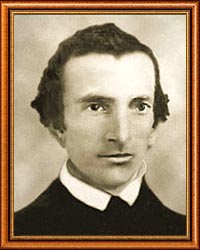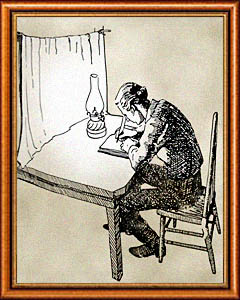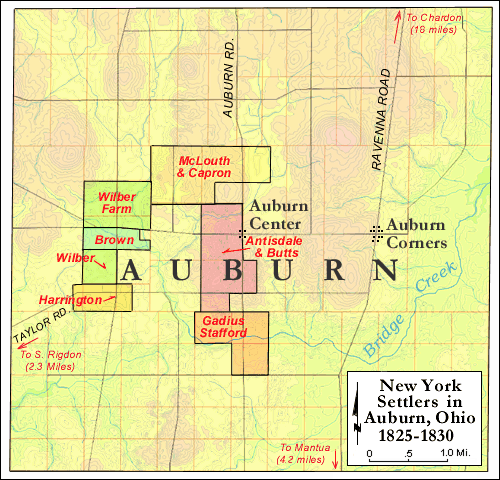marg wrote:I do believe the witnesses. And I don’t understand why you have a problem with what they say. I appreciate in the Book of Mormon there is a very brief mention that lost tribes lived somewhere else than America. But I think that was added, not something in Solomon’s book. Solomon’s book was used to write the Book of Mormon but it’s not a duplicate of Solomon’s book. So I don’t see a problem with Solomon’s book having lost tribes and then a few descendents being in Jerusalem such as Nephi and Lehi, and them making their way to American. Even Spalding’s story once they were in America there would be no need to mention them again as being descendents of some lost tribes.
marge, I am going to quote pertinent excerpts from the witnesses.
John Spalding wrote:It was a historical romance of the first settlers of America, endeavoring to show that the American Indians are the descendants of the Jews, or the lost tribes..... I find nearly the same historical matter, names, &c. as they were in my brother's writings.
Martha Spalding wrote:He had for many years contended that the aborigines of America were the descendants of some of the lost tribes of Israel, and this idea he carried out in the book in question..... I have no manner of doubt that the historical part of it, is the same that I read and heard read, more than 20 years ago.
Henry Lake wrote:This book represented the American Indians as the descendants of the lost tribes......I was astonished to find the same passages in it that Spalding had read to me more, than twenty years before, from his "Manuscript Found."
John Miller wrote:I have recently examined the Book of Mormon, and find in it the writings of Solomon Spalding, from beginning to end, but mixed up with scripture and other religious matter, which I did not meet with in the "Manuscript Found." Many of the passages in the Mormon Book are verbatim from Spalding, and others in part.
Aron Wright in his 1833 affidavit wrote:When at his house, one day, he showed and read to me a history he was writing, of the lost tribes of Israel, purporting that they were the first settlers of America, and that the Indians were their decendants. Upon this subject we had frequent conversations..... In conclusion, I will observe, that the names of, and most of the historical part of the Book of Mormon, were as familiar to me before I read it, as most modern history. If it is not Spalding's writing, it is the same as he wrote;
supposedly, Aron Wright in a draft letter wrote:I saw the Book of Mormon where I find much of the history and the names verbatim
Oliver Smith wrote:When I heard the historical part of it related, I at once said it was the writings of old Solomon Spalding. Soon after, I obtained the book, and on reading it, found much of it the same as Spalding had written, more than twenty years before.
Nahum Howard wrote:I have lately read the Book of Mormon, and believe it to be the same as Spalding wrote, except the religious part.
They say that the Book of Mormon is essentially the same as Solomon's story except for the religious parts. There are explicit statements there by four witnesses that Solomon's book was about the lost tribes. That was supposed to be central to his book. They say that the names Lehi, Nephi, Lamanites, and Nephites were in Solomon's story. You accept that. They say that Solomon's story was about the lost tribes. You seem to accept that. You seem to accept as evidence that the the names Lehi, Nephi, Lamanites, and Nephites, since they are in the Book of Mormon, as evidence that the witnesses are telling it accurately, but you not deem it important that something as explicit as the lost tribes not being in the Book of Mormon is nothing to worry about. I cannot prove that there never was a second manuscript with the names Nephi, Lehi, Lamanites, and Nephites authored by Solomon Spalding, but I can show you a Book of Mormon that is not about the lost tribes.
marge wrote:You said, “If you think that Solomon's story went back further in time than the Book of Mormon, then it would not have read nearly identical to Spalding's story in the historical parts, as the Conneaut witnesses averred.” Well I disagree we do know a portion of Solomon’s book was in the lost 116 pages. But in addition to that, if the witnesses recognize portions such as battles, character names, place names, sawme themes, to them that would seem like it was similar or the same as what Spalding wrote. None of them said it was exactly the same.
marge, please provide a reference to anyone who has seen those 116 pages. If we had them, there would be no speculation. If they were to come to light now, forensic science could determine their authenticity and there would be something we could talk about. But we do not have them and do not really know what was in them. We know what is supposed to be in them, and that is the story in 1 Nephi and 2 Nephi, told from Lehi's perspective.
marge wrote: Glenn, they wrote what they felt was important and what they remembered. You can’t criticize them for not writing exactly the same thing. If there are major disagreements or conflicts with what they wrote then that’s different. For example if some said it was not written in biblical language then that would be an issue. I don’t see where you’ve explained or shown that there is a major conflict between their statements. I’m aware that Josiah ‘s statement appears to be describing MSCC and I will quote from “Who Really Wrote The Book of Mormon?” to explain that.
I am not concerned about "exactly the same thing" except for the fact that several of the witnesses used the same exact phrases. But only the Hurbut witnesses.
although there were differences, Josiah Spalding’s description fits the mold of Manuscript Story–Conneaut Creek reasonably well. Moreover, he seems to have arrived at his brother’s home just after Solomon had begun to compose that work “merely for amusement”; and, by his description of the events in the plot, he seems to have left at just about the same time Solomon stopped work on it and began his new project. The title recalled by Josiah Spalding, Historical Novel, or Manuscript Found, may have been an alternative or working title that Solomon ultimately shortened to a Manuscript Found.
With respect to the chronology, we know that Josiah was not at Conneaut in May 1811 because his name is not on Nehemiah Kings census of all males over 21 (Solomon and John show up, but not Josiah). And we may presume that he was not there in the late summer of 1812 as well, because John’s wife Martha was staying at her brother in-laws just before his move to Pittsburgh, and she did not mention him in her story. Moreover, the story she claims to have “read and heard” while there is obviously not the same one with which Josiah was familiar. These circumstances, coupled with the date of January 1812 that appears by accident in Manuscript Story–Conneaut Creek just 37 pages from its end (see later in text), and with Josiah’s own statement that his brother “soon after moved to Pittsburgh,” all strongly suggest that Josiah visited Conneaut during the winter of 1811-12, and that he left in the spring just about the time Solomon stopped work on Manuscript Story–Conneaut Creek. Such reasoning leads to the conclusion that work on Manuscript Found began in earnest in the spring of 1812 and that Spalding had a reasonably complete manuscript in his possession by the time he departed for Pittsburgh six months later.
Although he may have started to compose it at an earlier day, then laid it aside, a Manuscript Found emerged as the one project Solomon Spalding (perhaps after consultations with friends such as Aron Wright) felt had the greatest potential for rescuing him and his family from an otherwise bleak financial future. In order to ensure its success, Spalding would test the quality of his work as it progressed by regularly reading chapters aloud to family and neighbors. Most likely these occasions were also used to solicit suggestions that would be helpful in polishing the story, while at the same time gaining insight into the book’s sales potential by watching the reaction of his audience.
This is incorrect in at least two areas. One is that Josiah's statement says that he went to Ohio and stayed with Solomon for a while after the war broke out and their financial calamities began. That would have been the war of 1812, which broke out in June of that year. So Josiah would have had to visit Solomon no earlier than June of that year. Josiah said that "I went to see my brother and staid with him some time. I found him unwell, and somewhat low in spirits. He began to compose his novel," I think that the outbreak of a war and the financial straits that it brought on are pretty good gist items.
According to Dale, Martha and John Spalding lived within walking distance of Solomon in the Conneaut area. So Martha's visit would probably not have been overnight. She probably visited at the same time noted by her husband. It does not appear that John visited his brother very often, as his statement notes a visit when John first moved to the area, then again two years or more later.
Also, the "January 1812" date on the letter they mention is more than likely "January 1813", according to a magnified copy Dale posted. Their chronology is a bit off.
glenn wrote: Have you read Redick McKee's first statement? He said that Solomon's story was about Canaan before the invasion by Joshua?
marge wrote: What’s the problem? Why couldn’t Spalding have added material that went further back in time to what the Conneaut witnesses had seen.
The story is already incoherent enough. Joseph Miller, another Amity witness said not a thing about it. McKee says nothing about the Americas. He changed his story in a later statement also. But who cares if the witnesses are consistent?
glenn wrote: The differences in what the Conneaut witnesses remember and what the others remember do not appear to be retrieval cues from the Book of Mormon, but from another source.
marge wrote:And what other source are you suggesting for the names, Nephi etc if not from a retrieval cuequeue by the Book of Mormon… Hurlbut? I don’t understand what you’re saying ..you will have to explain.
Oh yes I am suggesting Hurlbut. Because only the witnesses that Hurlbut contacted came up with those names. That is the point that you do not seem to understand. If the other witnesses had come up with the same type of names and phrases as the ones Hurlbut contacted, there would be less suspicion of witness leading. None of the other witnesses, in their initial statements, talked about Lehi, Nephi, Lamanites, Nephites, "by land and sea" etc. The witnesses contacted by Hurlbut show a uniformity and coherence that hte other witnesses do not. That is one of the reasons that most historians, pro and con LDS, have dismissed them. Not out of hand, but after analyzing them and the statements made by other witnesses.
glenn wrote:Just for fun, I asked my wife how the party led by Lehi and Nephi got to the America's. Her answer, "On the ship that Nephi built." Isn't it strange that none of the witnesses mentioned that? That is a "gist" item for the Book of Mormon.
That’s not a gist item. It is a particular detail. You ask a question with particular names and she replies with a particular name in the answer. And it is a particular detail of a ship that was built by that person.
Isn't that exactly what a gist item is? Something that people remember well because it is well encoded? The point is, that none of the witness gave that detail, although the building of the ship is a prominent historical feature. But maybe it wasn't in Solomon's book. Maybe Book of Mormon did have in it "the writings of Solomon Spalding, from beginning to end, but mixed up with scripture and other religious matter, which I did not meet with in the "Manuscript Found." This would more logically explain why there were so few details.
marge wrote: I see, you want the witnesses to have given all sorts of particular details… but why should they have? All that was at issue for them was not their credibility, there was no way as far as they were concerned at the time that their statement would be verified by comparing it to Spalding’s manuscript. They had no idea that anything of Spalding’s was still available, in fact they must have thought nothing of his would be around still. So why should they have given all sorts of details. What would be the point? If that was their intent, to lie, because in this post of yours you have accused them of that, then all they had to do was go through the Book of Mormon picking out details and give them in their statements. The purpose of their statements was simply to give enough detail as to why they thought the Book of Mormon contained Spalding’s writings based on their memories. Anything more served no purpose. Long extensive statements wouldn’t have proved a thing.
marge, I pointed out inconsistencies that were either inaccurate recollections or lies. It does not matter which one as to the accuracy of their statements.
Glenn
In order to give character to their lies, they dress them up with a great deal of piety; for a pious lie, you know, has a good deal more influence with an ignorant people than a profane one. Hence their lies came signed by the pious wife of a pious deceased priest. Sidney Rigdon QW J8-39








